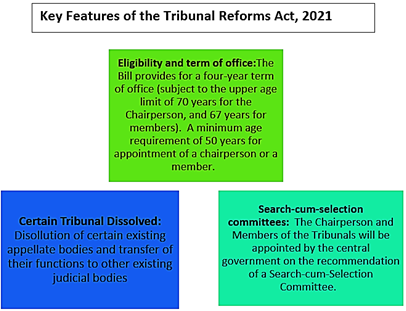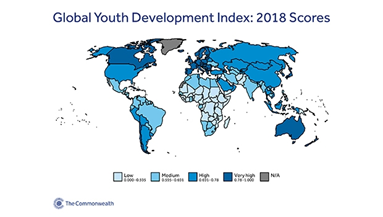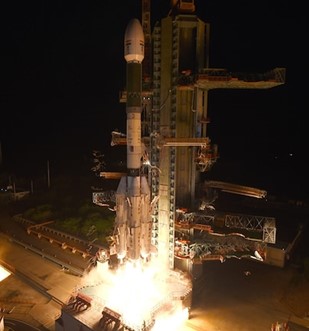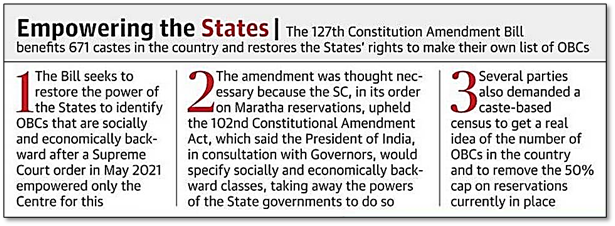Wednesday, 18th August 2021
Financial Inclusion Index (FI-Index)
In News
Reserve Bank of India has launched the Financial Inclusion Index (FI-Index) to capture the extent of financial inclusion in India.
About the Index
- Sectors Covered: The index comprehensively incorporates details of banking, investments, insurance, postal as well as the pension
- Inclusion scale: It captures information on various aspects of financial inclusion in a single value ranging between 0 and 100, where 0 represents complete financial exclusion and 100 indicates full financial inclusion.
- Indicators: The Index comprises of 97 indicators, which are categorized into three parameters: Access, Usage, and Quality which carry 35%, 45% and 20% of the weightage in the index respectively.
- Uniqueness: A unique feature of the Index is the Quality parameter which captures the quality aspect of financial inclusion as reflected by financial literacy, consumer protection, and inequalities and deficiencies in services.
- No base Year: The index does not have a base year and therefore will reflect the cumulative efforts of all stakeholders over the years towards financial inclusion.
- The index will be published annually in July every year.
- Findings of the Index this year:The annual FI-Index for the period ending March 2021 is 53.9 as against 43.4 for the period ending March 2017.

What is Financial Inclusion?
Financial inclusion is defined as the process of ensuring access to financial services and timely and adequate credit where needed by vulnerable groups such as weaker sections and low-income groups at an affordable cost (The Committee on Financial Inclusion, Chairman: Dr. C. Rangarajan).
Steps taken to improve Financial Inclusion in India:
- PM Jan Dhan Yojana scheme provides access to a basic savings bank deposit (BSBD) account.
- Jan Dhan-Aadhaar-Mobile (JAM) Trinity is taken up to plug leakages of government subsidies.
- Three Jan Suraksha Schemes or Social Security Scheme launched:
- Pradhan Mantri Suraksha Bima Yojana
- Pradhan Mantri Jeevan Jyoti Yojana
- Atal Pension Yojana
- National Strategy for Financial Inclusion 2019-2024 is being implemented by the Financial Stability and Development Council.
Sources:
One Sun, One World, One Grid
In news: Prime Minister in his Independence Day address, mentioned about the mega plan of "One Sun, One World, One Grid" (OSOWOG) or a trans-national electricity grid supplying solar power across the globe.
About the news
- With the mantra “The Sun never sets” this idea was first floated by India during the 1st assembly of International Solar Alliance in 2018.
- It shall pool in resources and connect 140 countries through a common grid that shall be used to transfer solar power.
- This plan is seen as India’s effort towards increasing its share of Renewable Energy production and to promote Cross-Border Electricity Trade.
- The ISA shall help India overcome the issues of Land Banks Shortage and Limited hours sunshine by expanding sourcing of solar energy to other nations.
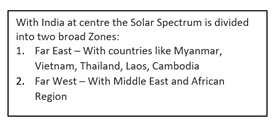
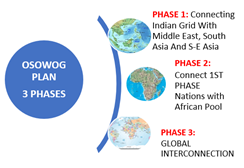
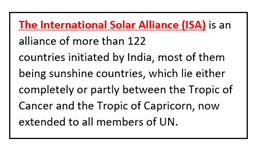
Why Is it Important for India?
- It is believed to be India’s Response to China’s One Belt One Road Initiative.
- India is taking the leadership role by increasing its involvement in providing Renewable Energy to Asian and African Countries which are need of reliable Energy supply, thereby providing ready Market for India.
- This is an ambitious plan for creating inter-continent power infrastructure which would help in addressing poverty, illiteracy and social development in Energy deprived regions of the world.
Sources:
Four New Ramsar Sites: India’s Wetlands
In News: Four more Indian sites - two each from Haryana and Gujarat - have been recognized as wetlands of international importance under the Ramsar Convention, taking the number of such sites in the country to 46.

What are Wetlands?
- A wetland is a distinct ecosystem inundated with water either permanently or seasonally.
- The Ramsar Convention, an international treaty for conservation of wetlands, ratified by Government of India in 1982, defines wetlands as “areas of marsh, fen, peatland or water, whether natural or artificial, permanent or temporary, with water that is static or flowing, fresh, brackish or salt, including areas of marine water the depth of which, at low tides, does not exceed six meters”.
- Around 4.63% of the geographical area of India are wetlands.
Threat to Wetlands
- India has lost nearly one-third of the natural wetlands to urbanization, agricultural expansion, and pollution over the last four decades.
- It is estimated that wetlands are vanishing three times faster than forests and their rate of disappearance is increasing.
- Wetlands are threatened byreclamation and degradation through drainage and landfill, pollution discharge, hydrological alteration, loss of biodiversity and disruption in ecosystem services provided by wetlands.
India’s policy to protect wetlands
- India is party to the Ramsar Convention that provides the framework for national action and international cooperation for the conservation and wise use of wetlands and their resources.
- National Wetland Inventory and Assessment (NWIA) was conducted in the country using Indian remote sensing satellites during 2006-2011.
- The National Wetlands Conservation Programme has been in operation since 1986. Since 2013, the programme is known as National Plan for Conservation of Aquatic Ecosystems.
- The Wetlands (Conservation and Management) Rules, 2017 notified by the Ministry of Environment, Forest and Climate Change serve as a regulatory framework for conservation and management of wetlands in India.
Sources:
Open Network for Digital Commerce (ONDC)
In News
The central government is moving fast on its promise of creating an open network for digital commerce (ONDC), which aims to democratise digital commerce.
About the News
- With a first-of-its-kind initiative globally, the government wants ONDC to serve the same purpose for e-commerce as UPI does for the digital payment domain.
- The government has clarified that it shall not mandate sharing of any transaction-level data by participants with ONDC and work with them to publish anonymised aggregate metrics on network performance without compromising on confidentiality and privacy.
- ONDC will be compliant with the information technology act, 2000 and designed for compliance with the emerging personal data protection bill.
- The government plans to establish an independent regulatory authority for e-commerce like Sebi.
- This is an extension of the e-commerce rules drafted for consumer protection by the Ministry of Consumer Affairs after several small retailers complained about the misuse of arduous power by giants Amazon and Flipkart.
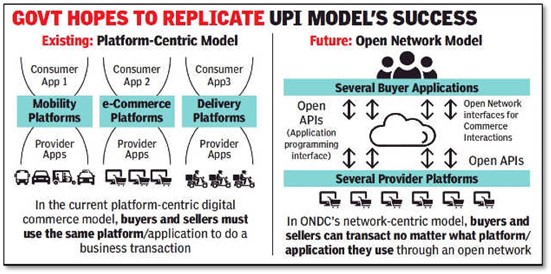
What is ONDC?
- ONDC is an initiative aimed to promote open networks for all aspects of the exchange of goods and services over digital or electronic networks.
- ONDC is to be based on open-sourced methodology, using open specifications and open network protocols independent of any specific platform.
- The whole procedure of implementing the changes across the e-commerce chain has been delineated to the Quality Council of India.
- ONDC shall initially give special attention help on-board small and medium players and will also plan for an information, education and communication campaign to educate and encourage users and address apprehensions of the network participants.
How will ONDC work?
- The foundations of ONDC are to be open protocols for all aspects in the entire chain of activities in exchange of goods and services, similar to hypertext transfer protocol for information exchange over internet.
- These open protocols would be used for establishing public digital infrastructure in the form of open registries and open network gateways to enable the exchange of information between providers and consumers.
- Providers and consumers would be able to use any compatible application of their choice for the exchange of information and carrying out transactions over ONDC.
- The ONDC will also be connected to payment gateways and offer delivery and logistics solutions for specific requirements.
Why do we need to develop ONDC?
- Standardization of Processes: ONDC protocols would standardize operations like cataloguing, inventory management, order management and order fulfilment in e-commerce.
- Empowerment and Innovation: ONDC will empower merchants and consumers by breaking silos to form a single network to drive innovation and scale, transforming all businesses from retail goods, food to mobility.
- Democratize e-commerce: The ONDC will democratise digital commerce, moving it from a platform-centric model to an open-network.
- This will enable, buyers and sellers to be digitally visible and transact through an open network, no matter what platform/application they use.
- Breaking Monopolies: This domination by dominant players like Amazon and Flipkart restrains the interests of smaller and financially afflicted retailers. ONDC will break this monopoly.
- Level Playing Field: The regulator for the ONDC, to be formed soon, will ensure level playing field and healthy competition through dispute settlement and penalties.
- This regulator will hear complaints from both consumers, brick and mortar traders and e-commerce players, acting as centralised authority for all non-personal data exchanges.
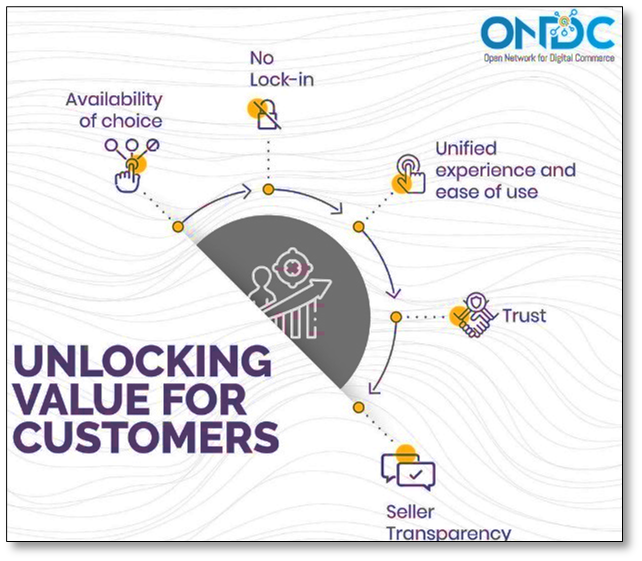
What can be the possible challenges in implementation of ONDC?
- Risky Intervention: Governments, generally, intervene in markets only when there is a clearly identifiable market failure or massive societal benefits from creating shared infrastructure.
- As there is no such visible market failure, the ONDC may be face resistance and governance issues.
- Not enough to end Monopolies: An infrastructure-led approach may not be sufficient, as it may again lead to creating market dominant players.
- For example, although UPI was set up to provide a level playing field, the top two service providers today process over 80 per cent of transactions.
- Adoption Hiccups: The methodology to drive the adoption of an open e-commerce platform or standards in a sector with entrenched incumbents is a difficult task.
- In principle, compelling either suppliers or consumers to use it is inadvisable.
Way Forward
- Regulatory framework: Any deployment of standards or tech should be accompanied by law or regulation that lays out the scope of the project. If collection of any personal data is envisaged, passing the data protection bill and creating an independent regulator should be a precondition.
- Adoption Method: Adoption of the ONDC can be enabled and accelerated by creating non-mandatory “reference applications”, and financial or non-financial incentives.
- Useful learnings can be drawn from the adoption of UPI: The government supported the rollout of BHIM as a reference app, and offered financial rewards through a lottery scheme to drive early adoption.
- Addressing Privacy: The platform should be built on “privacy by design” It should collect minimal amounts of data (especially personal data) and store it in a decentralised manner to save it from Hackers.
- Data exchange protocols should be designed to minimise friction and protect the consumer interest. Tools like blockchain could be used to build technical safeguards.
- Ensuring Inclusivity: A truly inclusive and participatory process can be achieved by making civil society and the public active contributors by, making relevant decisions and information public, and seeking wide feedback on drafts of the proposal.
- Also, ensuring quick and time-bound redressal of grievances will help build trust in the system.
Question: What is Open Network for Digital Commerce (ONDC)? Explain the need for creation of the ONDC platform and the possible challenges in its implementation.
Sources:
- How Modi govt plans to confront Amazon, Walmart's Flipkart with ‘UPI’ of e-commerce
- Open Network for Digital Commerce to be available for both goods and services: Piyush Goyal
- Open-sourcing project govt panel: What’s in store for online retailers
- ONDC to end e-commerce monopolistic practices, ensure data privacy: Piyush Goyal
- ONDC: All you need to know about govt initiative challenging Amazon, Flipkart
- Government planning open network platform for e-commerce, hopes for UPI-like success
- How Open Network for Digital Commerce could disrupt India’s e-commerce space
- The Open Network For Digital Commerce; Will it Prove to be A Significant Boon for E-commerce retailers in India?
- How will open network for e-commerce work?
This Day in History - First Rupee Coin Minted- EIC
On 19th August 1757, the first rupee coin was minted by the East India Company in Kolkata (then Calcutta). It was only in 1835 that a unified coinage system came to India. Before that, the three presidencies - Madras, Bombay, and Bengal - under the Company governance issued their respective coins. The mints that issued coins for the Company were stationed at Surat, Mumbai, and Ahmedabad.

Source:
Image of the Day - Mermaid Plant
This is the image of the newly discovered ‘Mermaid’ plant. Indian scientists have discovered this new plant species in India's Andamans archipelago. Scientists have named the specie Acetabularia jalakanyakae. Jalakanyaka in Sanskrit literally means mermaid and a goddess of oceans. The main feature of the newly discovered species is that the plant is made up of one gigantic cell with a nucleus.

Source:
TAPAS Initiative
- Context: Ministry for Social Justice and Empowerment has launched an online portal TAPAS (Training for Augmenting Productivity and Services).
- It is a standard MOOC (Massive Open Online Course) platform that provides course material such as filmed lectures by subject experts, e-study material etc in a manner that it supplements the physical classroom without compromising on the quality of teaching.
- The main objective of introducing the course modules is to impart training and enhance the knowledge and skills for the capacity building of the participants.
- The five basic courses are on Drug (Substance) Abuse Prevention, Geriatric/Elderly Care, Care and Management of Dementia, Transgender Issues and on comprehensive course on Social Defence Issues.
- The platform has been made with a quadrant approach (Video, Text, Self-Assessment and Discussions).
- It is the initiative of National Institute of Social Defence (NISD), Ministry of Social Justice and Empowerment.

Source:
Image Source:
Hunar Haats
- Context: The Union Ministry of Minority Affairshas set a target to provide employment opportunities to 7 lakh 50 thousand artisans, craftsmen through 75 Hunar Haats.
- Hunar Haat is an exhibition of handicrafts and traditional products made by artisans from the minority communities.
- It is the flagship initiative of the Minority Affairs Ministry under USTTAD (Upgrading the Skills & Training in Traditional Arts/Crafts for Development) scheme.
- The USTTAD scheme aims to promote and preserve the rich heritage of the traditional arts & crafts of the minority communities and boosts the skills of craftsmen, weavers and artisans who are already engaged in the traditional ancestral work.
- These Haats aim at providing market exposure and employment opportunities to artisans, craftsmen and traditional culinary experts and has proved to be “Empowerment Exchange” for master artisans and craftsmen.
- They are organized with the resolve of “Vocal for Local” in all parts of the country.
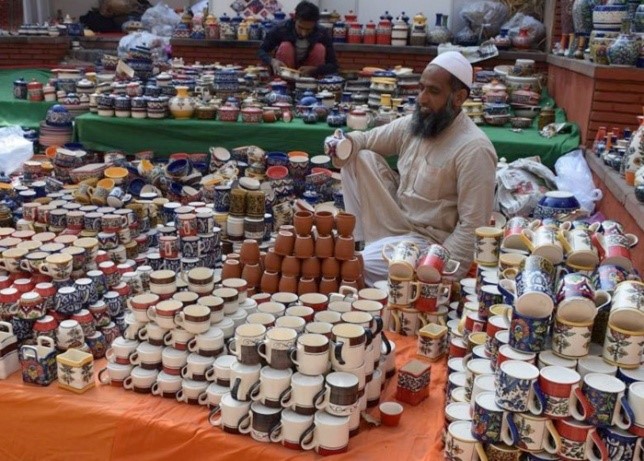
Source:
- 75 "Hunar Haat" to be organized under "Amrit Mahotsav" of 75 years of India’s Independence: Mukhtar Abbas Naqvi
- ‘Hunar Haat’ to return in September after COVID-19 break
- Hunar Haats proving to be “Empowerment Exchange” for master artisans and craftsmen from the minority communities
Image Source:
National Gene Bank
- Context: The world's second-largest refurbished state-of-the-art National Gene Bank was recently inaugurated at the National Bureau of Plant Genetic Resources (NBPGR), Pusa, New Delhi.
- Gene banks are a type of biorepository that preserves genetic material- seed plants, tissue cultures, etc.
- The National Gene Bank was established in the year 1996 to preserve the seeds of Plant Genetic Resources (PGR) for future generations and has the capacity to preserve about one million germplasm (living tissue from which new plants can be grown) in the form of seeds.
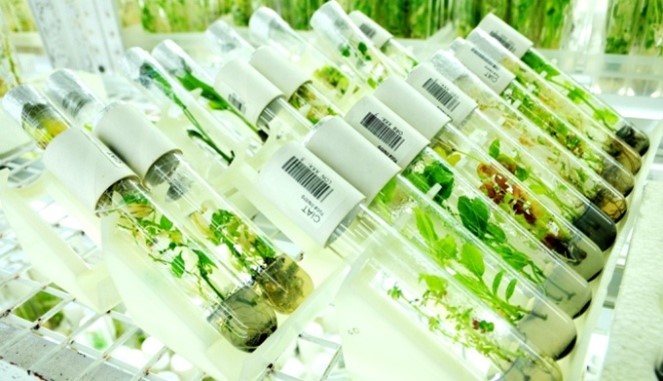
Source:
- Union Agriculture Minister inaugurated the world's second-largest refurbished gene bank at the National Bureau of Plant Genetic Resources
- Gene Bank
- Taking the legacy of conserving indigenous crops with world’s second-largest refurbished ‘Gene Bank’
Image Source:
Swavalamban Silai Schools
- Context: Small Industries Development Bank of India (SIDBI) has launched the third phase of setting up of 750 Swavalamban Silai Schools across 20 districts of 10 states.
- The silai schools are set up under Mission Swavalamban- the flagship initiative of SIDBI in partnership with Usha International Limited (UIL).
- Under this program, training is provided to aspiring women entrepreneurs on various aspects of stitching along with maintenance and repairing of the sewing machine by the expert trainers of UIL.
- The women entrepreneurs completing the training program are provided a sewing machine, training kit, and a Swavalamban Silai School signage board.
- So far, 1,700 Swavalamban Silai Schoolshave been set up in 24 districts across 7 states namely, Uttar Pradesh, Bihar, Jharkhand, Rajasthan, Telangana, Himachal Pradesh and Uttarakhand.
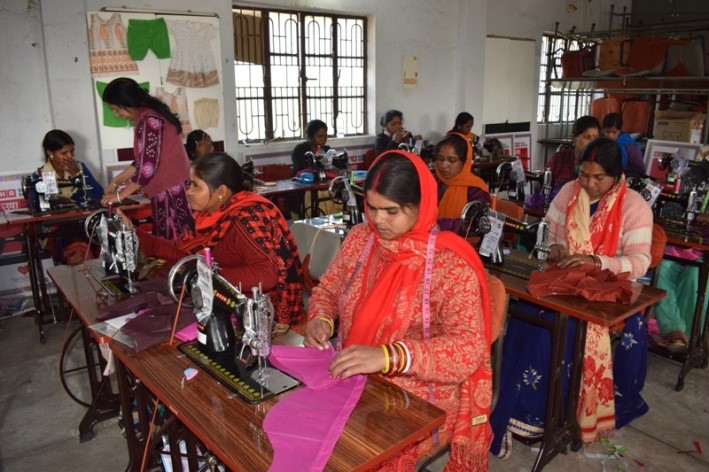
Source:
Image Source:
Understanding the strategic flux and humanitarian crisis in Afghanistan
Essence: This article is written in backdrop of how haphazard withdrawal of US forces from Afghanistan has led Taliban to takeover Afghanistan, leading to humanitarian crisis which have shaken the global conscience. Though in 1996, few Islamic countries were to recognize the Afghanistan as the Islamic Emirate of Afghanistan established by Taliban 1.0 but this time, Taliban will have to show moderation if they wish to be accepted as a member of the global community. As a close neighbour, India has keen stakes in ensuring a stable, secure, and developed Afghanistan & has an opportunity through UN Security Council to engage important stakeholders on the way forward.
Why should you read this Article?
- To get an overview of how takeover of Afghanistan by Taliban has led to humanitarian crisis and the support of few countries to Taliban symbolises what.
- To understand how it’s going to impact India and what possible steps India should take in this regard.
Source:
In Kabul, the centrality of Pakistan
Essence: The article opines over the recent Kabul takeover by the Taliban and how does it have a hidden hand behind Pakistan for success and support given by Pakistan to the Taliban. The ironic part of the article is that it gives an abstract reality for India to follow in the context of deriving its foreign policy affairs in recent times with Afghanistan. The mention of the Afghan Northern Alliance’s capture of Kabul city in 1996 by the Islamic Emirate of Afghanistan and now in 2021 by the Taliban as Panjshir Resistance shows that Pakistan supported the overtake and it is seemingly as of now a concern of India for Afghanistan to be irrelevance v. Pakistan’s centrality.
Why you should read this article?
- To understand the focus of India’s foreign policy concerns considering the current situation in Afghanistan.
- To understand the diplomatic stand of Islamabad in supporting the Taliban and metrics it is expecting out of the Kabul city overtake.
Source:
Doctor at the door: On doorstep health-care delivery
Essence: This article revolves around how Covid-19 exposed our preparedness to tackle such large-scale catastrophe on national level. It made us think on the lines that how the presence of Non communicable disease (NCD) amongst Indians which is 55% of the total disease burden as per Health of the Nation’s States report further aggravated the situation of Covid 19. The government needs to take steps to stop the spread of it for which it can draw inspiration from the Makkalai Thedi Maruthuvam – a community-based intervention scheme to tackle and treat NCD by Tamil Nadu.
The scheme can set a model for the nation to follow for how it has planned to tackle the spread of the NCD’s.
Why you should read this article?
- To understand the links between Non communicable disease and spread of other disease.
- To draw an understanding about Makkalai Thedi Maruthuvam scheme
Source:
Technology for conservation of resources: First automatic coach washing plant in MP
Technology
- Washing plant is provided with modern equipment with the aims to conserve water and saving time
- Plant uses 90 % less water and cleans the coach in just a duration of 10 minutes
Benefits
- Conservation of water and saving in manpower
- Cleans the exterior of train coaches more effectively and efficiently
- Involves water recycling facilities thereby further reducing water requirements.
Outcome
- According to the ministry, without automatic coach washing plants, 1500 litres water per coach is consumed. While 300 litres water per coach is consumed with Automatic Coach Washing Plants leading to annual saving of water is 1.28 crore kilolitres
Where to use this case study
- GS paper 2: Functioning of the Ministries and Departments of the Government, Important Aspects of Governance, Interventions for Development in various sectors
- GS paper 3: Developments and their Applications and Effects in Everyday Life, Conservation, Environmental Pollution and Degradation, Environmental Impact Assessment.
Source:
Share the article
Get Latest Updates on Offers, Event dates, and free Mentorship sessions.

Get in touch with our Expert Academic Counsellors 👋
FAQs
UPSC Daily Current Affairs focuses on learning current events on a daily basis. An aspirant needs to study regular and updated information about current events, news, and relevant topics that are important for UPSC aspirants. It covers national and international affairs, government policies, socio-economic issues, science and technology advancements, and more.
UPSC Daily Current Affairs provides aspirants with a concise and comprehensive overview of the latest happenings and developments across various fields. It helps aspirants stay updated with current affairs and provides them with valuable insights and analysis, which are essential for answering questions in the UPSC examinations. It enhances their knowledge, analytical skills, and ability to connect current affairs with the UPSC syllabus.
UPSC Daily Current Affairs covers a wide range of topics, including politics, economics, science and technology, environment, social issues, governance, international relations, and more. It offers news summaries, in-depth analyses, editorials, opinion pieces, and relevant study materials. It also provides practice questions and quizzes to help aspirants test their understanding of current affairs.
Edukemy's UPSC Daily Current Affairs can be accessed through:
- UPSC Daily Current Affairs can be accessed through Current Affairs tab at the top of the Main Page of Edukemy.
- Edukemy Mobile app: The Daily Current Affairs can also be access through Edukemy Mobile App.
- Social media: Follow Edukemy’s official social media accounts or pages that provide UPSC Daily Current Affairs updates, including Facebook, Twitter, or Telegram channels.

